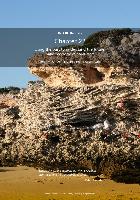Please use this identifier to cite or link to this item:
https://hdl.handle.net/11017/554Chapter 22: Using the past to understand the future: palaeoecology of coral reefs

View this entry
Full metadata record
| DC Field | Value | Language |
|---|---|---|
| dc.contributor.author | Pandolfi, J.M. | * |
| dc.contributor.author | Greenstein, B.J. | * |
| dc.date.accessioned | 2012-08-10T00:30:49Z | null |
| dc.date.available | 2012-08-10T00:30:49Z | null |
| dc.date.copyright | 2007 | en |
| dc.date.issued | 2007 | en-US |
| dc.identifier.isbn | 9781876945619 | en |
| dc.identifier.uri | http://hdl.handle.net/11017/554 | null |
| dc.description.abstract | Present anthropogenically-induced climate change is now well substantiated. The effects of climate change on the marine biosphere are the subject of great concern but we simply do not have enough long-term ecological data to predict potential changes in the geographic distribution and composition of marine communities. Hence, long-term time-series data on the past response of marine ecosystems to climate change have become increasingly relevant. Coral reefs provide a legacy of their existence because they accumulate vast thicknesses of biogenic sediments, so it is possible to acquire time-series ecological data in the form of variations in reef coral community structure during past episodes of environmental change. It is perhaps fortuitous that many of the proxies that we use to understand past climate on earth can be found in the major architectural components of reefs, the scleractinian corals. However, most emphasis has been placed on using corals as ancient thermometers and much less on their ecological response to global climate change. | en |
| dc.publisher | The Great Barrier Reef Marine Park Authority | en |
| dc.relation.ispartofseries | Book: Climate change and the Great Barrier Reef: a vulnerability assessment | en |
| dc.relation.uri | http://hdl.handle.net/11017/137 | en |
| dc.title | Chapter 22: Using the past to understand the future: palaeoecology of coral reefs | en |
| dc.type | Book section or chapter | * |
| dc.subject.asfa | Climatic changes | en |
| dc.subject.asfa | Ecosystem resilience | en |
| dc.subject.asfa | Coral reefs | en |
| dc.subject.asfa | Palaeoecology | en |
| dc.description.notes | This is Chapter 22 of Climate change and the Great Barrier Reef: a vulnerability assessment. The entire book can be found at http://hdl.handle.net/11017/137 | en |
| dc.contributor.corpauthor | Great Barrier Reef Marine Park Authority | en |
| dc.bibliographicCitation.title | Climate change and the Great Barrier Reef: a vulnerability assessment | en |
| dc.bibliographicCitation.stpage | 727 | en |
| dc.bibliographicCitation.endpage | 744 | en |
| dc.bibliographicCitation.authors | Johnson, J.E. | * |
| dc.bibliographicCitation.authors | Marshall, P.A. | * |
| dc.subject.apais | Environmental management | en |
| dc.subject.apais | Environmental impact | en |
| dc.publisher.place | Townsville | en |
| dc.relation.connectiontogbrmpa | GBRMPA published this item | en |
| dc.subject.category | Animals | en |
| dc.subject.category | Plants | en |
| dc.subject.category | Ecosystems | en |
| dc.subject.category | Processes | en |
| dc.subject.category | Economic values | en |
| dc.subject.category | Social values | en |
| dc.subject.category | Climate change | en |
| dc.subject.category | Coastal communities | en |
| dc.subject.location | Reef-wide | en |
| dc.keywords | CCAP output | en |
| dc.keywords | CCAP 07/08 | en |
| dc.keywords | climate change action plan 1 | en |
| dc.keywords | Vulnerability assessment | en |
| dc.keywords | resilient GBR ecosystem | en |
| dc.keywords | targeted science | en |
| dc.keywords | A1 | en |
| dc.keywords | A1.3 | en |
| dc.keywords | A1.4 | en |
| dc.keywords | A1.2 | en |
| dc.keywords | B1 | en |
| dc.keywords | B1.3 | en |
| dc.keywords | B1.4 | en |
| Appears in Collections: | Effects | |
Files in This Item:
| File | Description | Size | Format | |
|---|---|---|---|---|
| Chapter-22-Using-the-past-to-understand-the-future-palaeoecology-of-coral-reefs.pdf | 1.15 MB | Adobe PDF |  View/Open |
Items in the ELibrary are protected by copyright, with all rights reserved, unless otherwise indicated.
